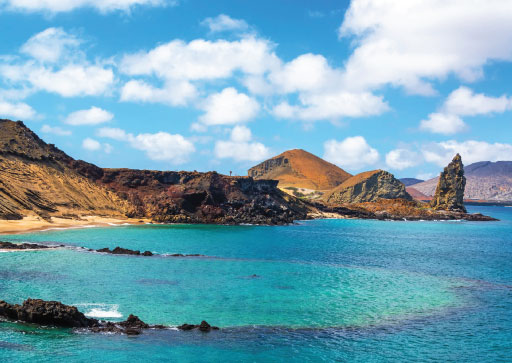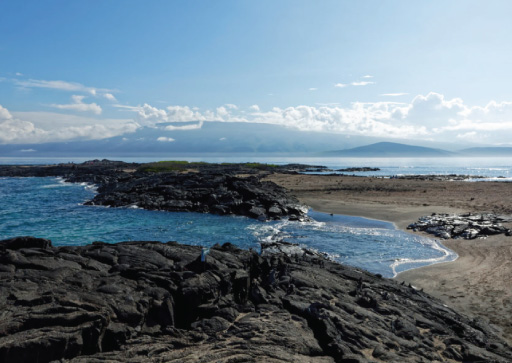The Galapagos Islands Geology, The Archipelago Formed by Volcaones
How the Islands were formed?

The Galapagos Islands are a worldwide well known destination for their endemic fauna, but their geology is equally interesting. 14 million years ago, the eruption of oceanic volcanoes, broke the surface of the Pacific approximately 1000 km from the current continental Ecuador, forming the first islands that would later be known as the Galapagos archipelago.
The archipelago owes its origin to a hot spot, where magma from the interior of the earth sprouts through the crust forming volcanoes in the sea, the volcanoes are settled in the Nazca plate, which is an oceanic tectonic plate that is located in the eastern Pacific, off the west coast of South America, specifically off the north coast of Chile and the entire coastline of Peru, Ecuador, and Colombia. Tectonic plates, in geological terms, are rigid plates of solid rock that make up the earth's surface, and are called the lithosphere.

Due to the Nazca plate moving about 4 cm from west to east each year, the oldest islands, some already fully eroded underwater, are in the east, and the youngest ones in the west; like Fernandina that is still on top of the hot spot. During the movement of the plate, the hot spot does not change places, that is why the islands slowly move away from the hot spot, and this in turn allows more volcanoes and islands to be created.
The eastward movement of the Nazca plate causes it to collide with the South American plate and since the latter is continental and the Nazca oceanic (higher density), the Nazca plate is forced to get under the other. When this occurs and the plate is forced to move into the mantle, the mantle begins to melt, causing it to reach the surface where it will form a volcano that will eject molten magma called lava.

The Galapagos Islands show certain interesting volcanic characteristics, one of the most significant is the existence of volcanic calderas. A caldera is a circular depression in the original crater. During an eruption the crater is fed from the lower magma compartment, when the magma is removed an open cavity remains, so that the roof of the boiler sinks and the floor of the crater descends and its diameter widens.
In June 1968 the floor of the Fernandina Island caldera fell 200 meters due to the collapse of the ceiling of the underlying magma chamber.

Many of the islands are only the peaks of some volcanoes and show a high state of erosion. Galapagos is the second group of islands with the highest volcanic activity in the world, surpassed only by Hawaii.
Furthermore, volcanoes have continued to shape ecosystems. Eruptions in Fernandina occur every two to three years. This can wipe out some species when lava falls directly, but it can also divide animals into two groups.
The last eruptions that occurred were, in Wolf in 2015, Marchena in 1991, Sierra Negra in 2018 and Fernandina in 2020, are the clear evidence that the archipelago is still in a constant process of formation.